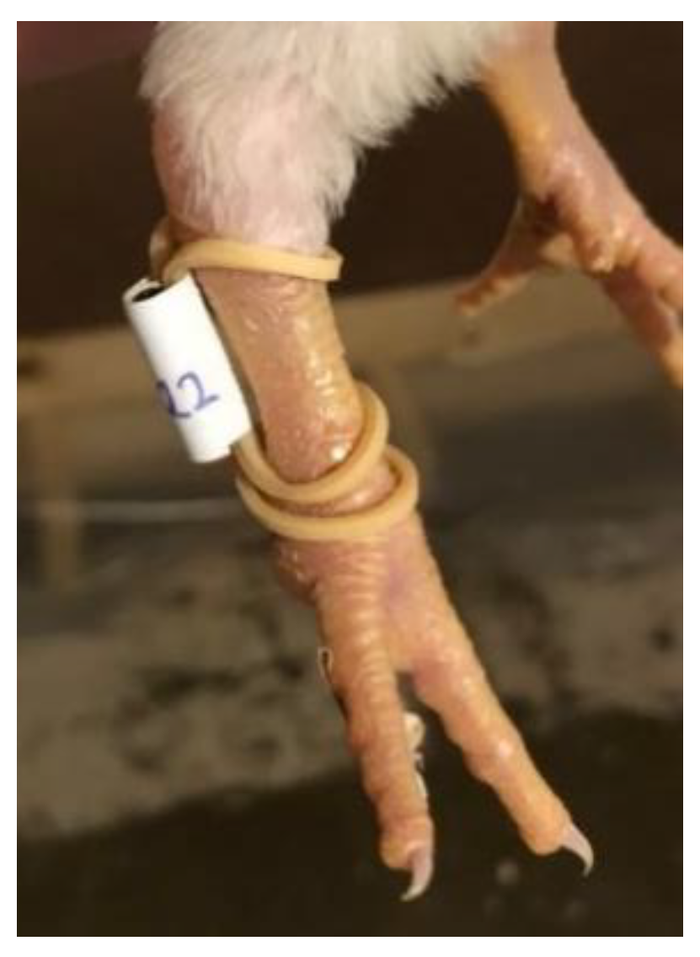Tracking individual activity level can indicate animal health, welfare and performance.
November 6, 2020

Monitoring the activity of individual broilers can be challenging, especially when the animals are housed in groups of thousands of birds. However, the individual activity level is precisely what can be a valuable indication of the health, welfare and performance of the animals, according to a news release from Wageningen University & Research (WUR).
Scientists from WUR have succeeded in developing a new tracking system that follows broilers through the pen with a tag on their leg, which could record the activity levels of individual broilers throughout their life.
WUR researcher Malou van der Sluis said the system could be compared with mobile apps for runners such that, “When you go for a run, the app registers the time, your location and, consequently, the distance traveled. This allows you to show how active you have been. Our broilers are now doing the same.”

“We can now estimate the level of activity of an individual broiler," Van der Sluis said. "That is valuable information for the farmer. This systems allows him to obtain detailed individual data on broiler location and activity throughout its life. The data can be valuable for assessing — and perhaps even predicting — health, welfare and performance of broilers. It potentially can be implemented in breeding programs as well."
He continued, "However, it will take some time before the first 'antenna floor' is on the market. Fitting a complete barn with a tracking system with this level of detail is difficult and expensive, but less-detailed approaches — for example, using fewer antenna grid cells — might be feasible for large-scale implementation. An alternative focusing on flock-level activity may also be a useful tool at the commercial farm level, warning the farmer about changes in activity in the flock or distribution in the house."
Validation of the system
To validate the RFID system, the scientists made top-view video recordings of the pen to assess both the location of the birds over time and the individual distances moved.
A comparison between RFID and video data showed that, in 62.5% of the cases, the location on the video and from the RFID data matched completely, i.e., the bird was positioned in the same grid cell in both observations, WUR reported. When allowing for a deviation of one neighboring antenna grid cell, this increased to 99.2%. The distances calculated from the RFID data and as scored on video showed a strong rank correlation (rs = 0.82).
This was a joint study by WUR and Utrecht University, in collaboration with Cobb Europe and Breed4Food, and was recently published in the scientific journal Sensors.
The paper — "Assessing the Activity of Individual Group-Housed Broilers Throughout Life Using a Passive Radio Frequency Identification System — A Validation Study" — is available at www.mdpi.com/1424-8220/20/13/3612.
You May Also Like



